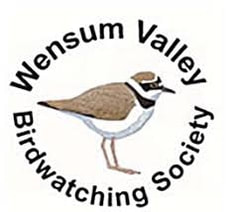|
Speaker: Nick Moran Reporter: Sue Gale Nick recollected that he had given a talk on this subject to WVBS some 7 years ago, but assured us that this was an updated version suitable for our current times. Nick is currently Training Manager for the BTO, based in Thetford, having moved from managing Birdtrack some 5 years ago. But he has always been interested in birding, and one tip from his father that has stayed with him, and registered strongly with me, is ‘Common things occur commonly’. Put another way that many of you will recognise – ‘Downgrade, my dear’. Nick asked his audience to choose one of 10 aspects of birding as their greatest challenge, and he was not surprised to find that easily the most common choices were ID by sound and by sight. So, he formulated a plan for the talk on the basis of this He would talk about – ID, Opportunities for improvement, ways to practise and patch birding and recording.
ID - The first thing to realise is that there are many things to focus on other than plumage, and that these should be learned and looked for first. (There are lots and lots of good resources to help, from BTO’s own training videos to online records of bird calls to the many, many guide books.) Structure is the first thing to try and establish, followed by shape. Leg length, bill size, tail length etc are the place to start. Shape is helpful but can easily vary, for example a fanned tail is very different from an unfanned one, whereas the structure will not change. Size comes next, but is often unreliable. A single bird has no reference point, and distance can be misleading, so size should be used with care. Nick followed this up with an exercise to pair male and female ducks using structural features. He also promised that he could always return to go into ID by sound at a future time! Opportunities to improve – Firstly Nick says you should know your own weaknesses, and then push yourself to improve. Nick found that learning new skills had also helped him to learn about bird ID. For example, he trained as a bird ringer and incidentally learned a lot about plumage and the aging process. Don’t try to do everything at once, but choose a pair or small group of species and try to become familiar with them. Using that knowledge about structure can be enormously helpful when identifying eg. raptors. And don’t give up. Keep trying and remember to practise! Practise – Some ways to practise can be done indoors. Remember a photograph and try to describe the bird, or read a description for someone else to note down. Anything that encourages careful observation and equally careful note-taking is helpful. BTO ID videos are excellent, and BTO also offer many training courses. Surfbirds.com can be helpful as can natureid.no/bird (Norwegian site). However, practising in the field is always going to be the best way to learn. It’s a good idea to buddy up with someone, either for security or to share ideas and learning. Someone to bounce ideas off. Patch birding - But best of all is to select a local patch and get to know it. Pick somewhere that is in fairly easy reach but has enough birdlife to keep you interested. Nick has a further talk on the 7 Cs of patch birding and he had enough time to look at a few of them. Firstly Continuity. Over years of visiting the same site you can spot trends for that location. As examples Nick told us that over the years he had seen fewer and fewer pochard at Nunnery Lakes, while over the same time numbers of Little Egrets were rapidly increasing. You can also put your findings into Context, for example by comparing local trends with national ones. You can build a Connection with the species that frequent your chosen patch. Nick sees far more Jack Snipe than he used to, partly at least because he knows the sort of places they might prefer. Similarly, he feels a close connection with cuckoos, which are not only seen on the reserve but which are also the subject of much tracking research carried out by the BTO. Finally, it really a pleasure to be part of a community of like-minded individuals all focussed on the same area. Patch birding does sometimes lead to unusual finds, the most celebrated in Nick’s area being the male Little Bittern found in 2019. Nick finished with a final question, to see what area of birding we would all like to focus on in the coming year. Top of the list was still ID, mostly by songs or calls, but patch birding also featured heavily. I’m sure Nick left everyone with plenty to think about, and perhaps the intention to be a little more systematic in their approach to improving their birding. Many thanks to him for an engaging presentation.
0 Comments
Leave a Reply. |
Please feel free to read through our reports from our monthly indoor / online meetings. Archives
May 2024
Categories |

 RSS Feed
RSS Feed
